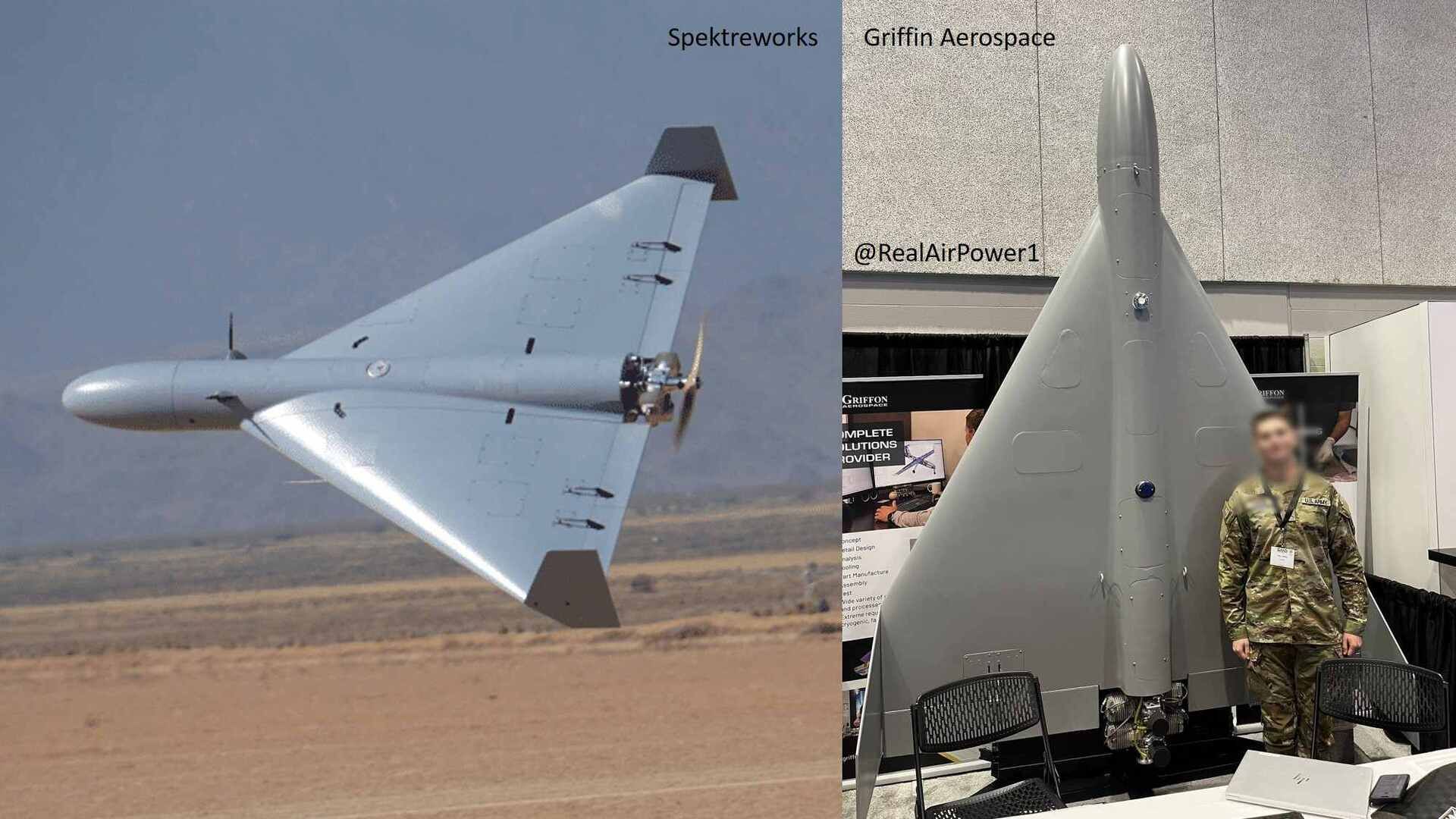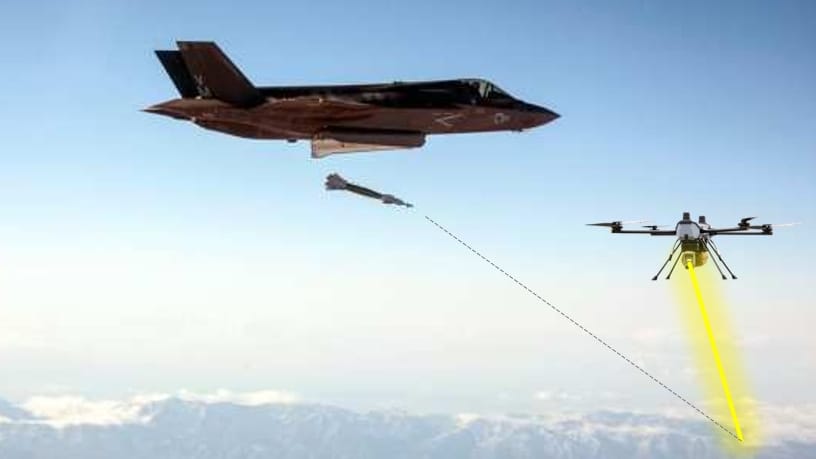- The Merge
- Posts
- 🔷 Kamikaze Clones
🔷 Kamikaze Clones
Yo, follow us on LinkedIn. It’s not a trap—we promise.
🎧 PODCAST! Grab the show where you get your content: Spotify, Apple, and YouTube. Don’t forget to leave a rating and review!

Ukaine SOC
Kamikaze Clones
If you’ve even casually tracked the war in Ukraine, you know about the Shahed-136—the Iranian delta-wing one-way attack drone.
Unveiled in 2021 and first spotted in Ukraine in September 2022, the Shahed-136 lives at the intersection of several tech roadmaps—past, present, and future.
Shahed
Iran’s Shahed-136 is widely recognizable for its unique shape and size: the delta wing drone measures 11 ft long and has an 8 ft wingspan.
But it didn’t just show up one day.
The Shahed-136 is an up-sized version of the Shahed-131—a drone Iran first unveiled in 2015.
Though nearly identical looking, the -136 is 30% larger, weighs 50% more, and travels twice as far. Here’s a slick interactive website that compares the 2.
Both are built using basic materials (wood, fiberglass, commercial components), which keeps the cost ultra-low for such a large, long-range drone (in the $35,000 range).
That cost imbalance, scaled production, and long-range have made it a critical piece of tech in the Ukraine war.
The Originals
These Shahed drones can be traced back to the 1980s in Germany. Aircraft manufacturer Dornier’s DAR (Die Drohne Antiradar), a radar-hunting drone. Iran’s drones look strikingly similar to the DAR, right down to the vehicle launch mechanism. In fact, Iran’s MD-550 drone engines are copies of the venerable German L-550.
Side note: At about the same time in the late 1980s, South African company Kentron developed a similar-looking radar-seeking drone called the ARD-10 Lark. It was cancelled before it went into production, largely due to the end of the South African Border War (aka the Angolan Bush War). Despite the program being cancelled, Kentron continued to show the ARD-10 on the expo circuit into the early 1990s.

Russia
Russia licenses production of Iran’s Shahed-136 as the Geran-2 (Geran-1 is the Russian version of the -131).
Despite impressive mass production, the process remains largely manual, with no automated assembly lines or robotics in sight. Efficiency here is relative, as Russia prefers cheap manual labor (which it has plenty of) to scale production in lieu of industrial sophistication.
The Geran-2 continues to evolve from its -136 roots, with a supply chain mixing imported and domestic parts, many dual-use commercial components sourced globally.
Adding to the evolution is the new jet-powered Geran-3, a variant of Iran’s Shahed-238 that looks like someone just slapped a jet engine on a Shahed-136. This much faster drone intends to use speed to avert Ukrainian defenses, which have been optimized to defend against masses of prop-speed drones.

China
China is using drones that look like Iran’s Shahed drones, too—but it’s not that simple.
The ASN-301 (aka JWS-01), which first emerged in 2017, resembles a Shahed, but it's actually based on Israel’s IAI Harpy drone, and the evidence is pretty clear. China bought 100 Harpy drones in the 1990s to reverse engineer.
And IAI’s Harpy? It was developed in the late 1980s and was based on designs from Kentron.
If that sounds familiar, congratulations—you’re paying attention. The company mentioned in the above side note sold its ARD-10 design to Israel after the South African production contract was canceled.
They are employed using a conspicuous trailer side-launch concept that holds 12 drones per trailer.

Last year, China unveiled another evolution dubbed the PD-2900.
It shares a similar shape but is much larger, featuring a twin-prop pusher setup that reportedly carries twice the payload and flies for 12 hours (a 1,500-mile range). It is now entering mass production (video).
…and the US?
Last month, the Pentagon unveiled a new drone program called LUCAS.
The Low-Cost Uncrewed Combat Attack System (LUCAS) is departing from the US tradition of developing numerous designs and concepts, and instead focuses on production and scale.
The design the US is leveraging is—you guessed it—Iran’s Shahed-136!
Public details are minimal, but what we do know is that at least 2 companies are on contract to produce US Shahed clones.
Spektreworks was the first company to go public, with its FLM 131 last month. But, if you’ve been following the small company on LinkedIn, you’d know they teased an FLM 131 launch video 2 months ago—and they’ve had a larger FLM 136 variant on their website for about a year.
The other company is one that took us a minute to figure out, but pictures emerged online of a Shahed-136 clone dubbed the MQM-172. It was spotted in the booth of Griffen Aerospace, though no details are on their website (yet).

What Now
Sometimes the 80% solution is good enough.
It seems that the world has concluded the delta-wing, flying-wing, pusher-style design is good enough, freeing up time and resources to focus on mass production and rapid iteration.
On that note, LUCAS has legs to be “the real Replicator program,” because it isn’t throwing money at existing drone programs, but baking in scale and cost efficiency from the beginning.
As for choosing Iranian drone designs to do so, this LinkedIn comment sums up the sentiment nicely: "We're entering a new era"...where our adversaries don't copy our tech, we copy theirs. I hope that role-reversal doesn't imply we're screwed.
In That Number
$1
OpenAI is partnering with the U.S. General Services Administration to offer ChatGPT Enterprise to all federal agencies for a nominal fee of $1 per agency for the next year, enabling secure and widespread AI access across the government.
Yes, that’s one dollar.
TRIVIA
On this day in 1945, Japan announced its surrender after the US dropped a second atomic bomb—this time on the city of Nagasaki—ending World War II. What was the name of that bomb?
A) Little Boy
B) Fat Man
C) Thin Man

On the Radar

Indian Air Force
Bad intel. On May 7, 2025, an Indian Rafale was reportedly downed by a Pakistani J-10CE using a long-range PL-15E missile, marking a significant beyond-visual-range kill. A root cause was not a capability advantage, but India’s intel underestimated the missile’s range—Indian pilots simply flew way closer than they otherwise would have during the engagements.
The Merge’s Take: This engagement reinforces what warfighters already know: live by the gouge; die by the gouge. Intel and intel sharing are critical differentiators in warfare. Pakistan’s sensor fusion, networked operations, and closely guarded missile reach dismantled Indian assumptions.

Lockheed Martin / PDW composite
Pentagon pairs F-35 with quadcopter. A C100 quadcopter successfully guided four GBU-12 bombs dropped by an F-35 in recent tests, engaging targets up to 2,000 meters away.
The Merge’s Take: This concept is akin to taking the ground-lase employment method airborne—literally. Installing laser designators on drones issued to JTACs assigned to ground forces creates a unique, elevated sensor-and-targeting combination that solves the line-of-sight dependency inherent in traditional JTAC-lasing methods.
They Said It
“There’s no one silver bullet of a phenomenology that’s going to do this. It’s going to require a variety of phenomenology.”
— Space Force Lt. Gen. DeAnna Burt, on the complex challenges of developing space-based sensors for tracking moving aerial targets
Keep an eye on this—it’s one of the fundamental assumptions in the E-7A Wedgetail program.

Knowledge Bombs
Shield AI's updated V-BAT drone passed US Coast Guard’s operational test and evaluation
China’s third tailless next-generation stealth aircraft was spotted
Palantir reported remarkable Q2 results exceeding $1B in revenue
Lockheed Martin & Raytheon are competing in the Army’s new autonomous launcher program
The Navy completed a 73-hour test flight with a solar-powered unmanned Skydweller drone
Taiwan drafted a special $20-30B defense budget to boost missile and drone capabilities
Northrop Grumman released its first official F/A-XX concept art
4 nations agreed to buy $1B worth of US weapons for Ukraine (Sweden, Norway, Denmark, and the Netherlands)
The DoD Accelerator led a $6M Series A investment in Baxter Aerospace’s defense tech (more on this later this year…)
💎 Free Merch! 💎
Don't keep us a secret!
Share the Merge = earn free swag.
It's that simple.

You currently have 0 referrals, only 3 away from receiving Stickers.
Or copy and paste this link: https://themerge.co/subscribe?ref=PLACEHOLDER
ANSWER
B) On August 10, 1945, Japan submitted its acquiescence to the Potsdam Conference, a day after the "Fat Man" was dropped on Nagasaki. The initial atomic bomb was "Little Boy" and was employed on Hiroshima.

National Archives
Interested in advertising?
Contact us here.